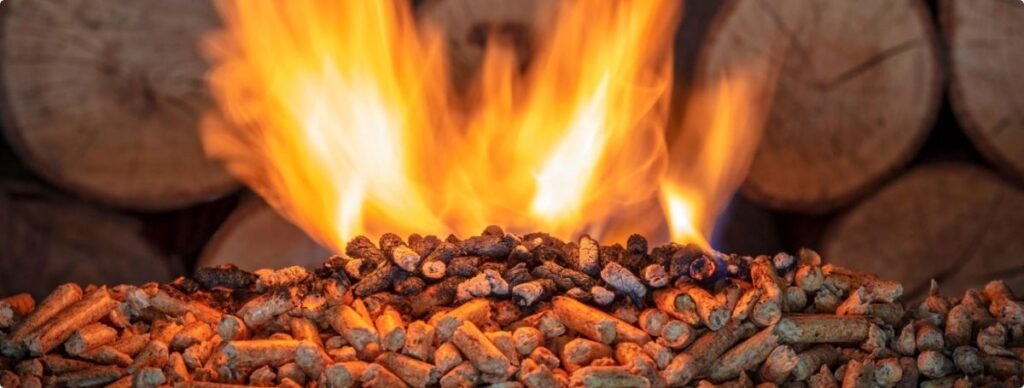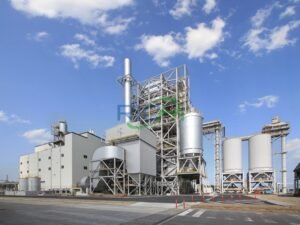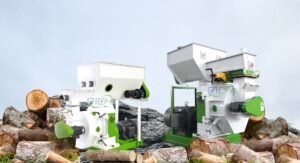
Wood pelletizers are essential machines in the biomass industry, converting raw materials into high-density pellets used for energy production, animal bedding, and other applications. Proper maintenance and care are crucial for ensuring the efficient operation, longevity, and cost-effectiveness of these machines. This article outlines key considerations and best practices for maintaining and caring for your wood pelletizer.
1. Follow the Manufacturer’s Recommendations
The first and most important step in maintaining your wood pelletizer is to follow the manufacturer’s recommendations for operation and maintenance. The manufacturer’s instructions provide specific guidance on:
- Lubrication: The type and frequency of lubrication required for various components, such as bearings, gears, and chains.
- Cleaning: Procedures for cleaning the machine, including the die, rollers, and other critical parts.
- Adjustments: Proper settings for die clearance, roller pressure, and other adjustments that affect pellet quality and machine performance.
- Troubleshooting: Steps to take in case of malfunctions or performance issues.
By adhering to the manufacturer’s recommendations, you can ensure that your wood pelletizer operates at peak efficiency and minimize the risk of premature wear or failure.
2. Perform Regular Inspections
Regular inspections are essential for identifying potential issues before they escalate into major problems. Inspect your wood pelletizer daily for:
- Unusual noises or vibrations: These can indicate bearing wear, imbalance, or other mechanical issues.
- Leaks: Check for oil or grease leaks that can lead to contamination and reduced lubrication.
- Wear and tear: Inspect critical components like the die, rollers, and screens for signs of wear and replace them as needed.
- Cleanliness: Ensure that the machine is free from accumulated dust, debris, and foreign materials that can affect performance and cause damage.
Document your inspection findings and address any issues promptly to maintain optimal machine performance.

3. Lubricate Properly
Proper lubrication is essential for reducing friction, minimizing wear, and extending the lifespan of your wood pelletizer. Follow these best practices for lubrication:
- Use the recommended lubricants: Consult the wood pellet press manufacturer’s instructions for the specific type and grade of lubricant required for each component.
- Lubricate at the recommended intervals: Adhere to the manufacturer’s recommended lubrication schedule, which may vary depending on the component and operating conditions.
- Apply the correct amount of lubricant: Overlubrication can be as harmful as underlubrication, leading to leaks, contamination, and reduced efficiency.
- Clean lubrication points before applying new lubricant: Ensure that the lubrication points are free from dirt, debris, and old lubricant to prevent contamination.
4. Replace Wear Parts Proactively
Certain components of your wood pelletizer, such as the die, rollers, and screens, are subject to wear and tear due to the high pressure and friction involved in the pelleting process. Replace these parts proactively based on:
- Operating hours: Replace wear parts at the intervals recommended by the manufacturer, typically measured in hours of operation.
- Condition: Monitor the condition of wear parts and replace them when they show signs of significant wear or damage.
- Performance: If you notice a decline in pellet quality or machine performance, it may be time to replace the die, rollers, or screens.
Using high-quality replacement parts from the original manufacturer or approved suppliers can help ensure optimal performance and longevity.
5. Maintain a Clean Work Environment
A clean and well-organized work environment is essential for maintaining your wood pelletizer and ensuring the quality of the finished pellets. Keep the area around the machine free from clutter, debris, and excess dust by:
- Sweeping and vacuuming regularly: Remove accumulated dust and debris to prevent contamination and maintain a safe working environment.
- Storing raw materials and finished products properly: Keep raw materials and finished pellets in designated areas to avoid introducing foreign materials into the machine.
- Maintaining good housekeeping practices: Encourage employees to keep the work area clean and organized, with tools and supplies stored in their proper places.
6. Train Operators and Maintenance Personnel
Proper training is essential for ensuring that your wood pelletizer is operated and maintained correctly. Train operators and maintenance personnel on:
- Machine operation: Provide hands-on training on starting, stopping, and adjusting the machine to ensure optimal performance.
- Safety protocols: Educate employees on safety procedures, including the use of personal protective equipment (PPE) and emergency response plans.
- Maintenance tasks: Train maintenance personnel on lubrication, cleaning, and inspection procedures to ensure that they are performed correctly and consistently.
Regular training and refresher courses can help maintain a well-informed and skilled workforce capable of keeping your wood pelletizer in top condition.
7. Keep Accurate Records
Maintaining accurate records is crucial for tracking the performance and maintenance history of your wood pelletizer. Keep records of:
- Operating hours: Track the total hours of operation for the machine and its critical components.
- Maintenance activities: Document all maintenance tasks performed, including lubrication, cleaning, and part replacements.
- Performance data: Monitor and record key performance indicators, such as pellet output, energy consumption, and product quality.
Reviewing these records can help you identify trends, optimize maintenance schedules, and make informed decisions about equipment upgrades or replacements.
Conclusion
Maintaining and caring for your wood pelletizer requires a combination of following manufacturer recommendations, performing regular inspections, proper lubrication, proactive replacement of wear parts, maintaining a clean work environment, training operators and maintenance personnel, and keeping accurate records. By implementing these best practices, you can ensure that your wood pelletizer operates efficiently, produces high-quality pellets, and has a long service life.Investing in proper maintenance and care not only protects your investment but also contributes to the overall profitability and sustainability of your biomass operation. As the demand for renewable energy sources and sustainable practices continues to grow, the importance of well-maintained wood pelletizers will only increase, making them a critical asset in the biomass industry.






